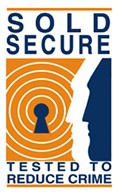Cycleplan policies are provided on the basis that bicycles left unattended are secured to an immovable object using either a Sold Secure rated lock, or Thatcham approved lock.
Sold Secure test and rate bicycle locks sold in Britain. The locks are graded Bronze, Silver, Gold and Diamond (formerly Platinum) and are dependent on the length of time it would take a bicycle thief to break the lock. The higher the rating, the higher the level of security provided.
You must have the appropriate lock based on the value of your bicycle. To help you choose the right lock, we’ve selected a range of recommended bicycle locks for different bicycle values.
In the event of a claim you will be required to provide proof of your lock. This can be the original receipt, packaging or a photo which clearly shows the make and model of the lock. Please remember to keep this safe in case you need to make a claim.

